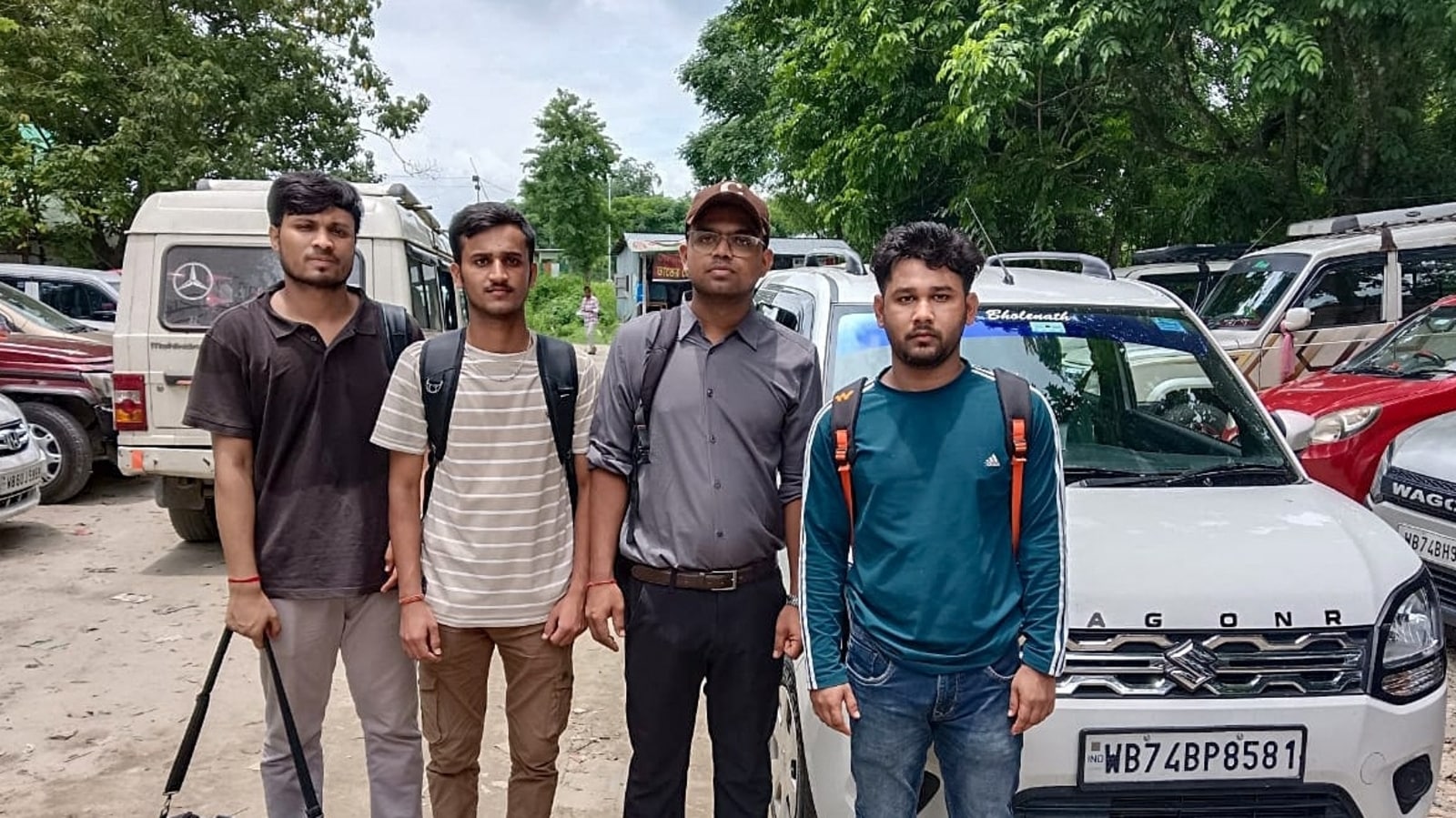Schools have reopened, public transport is a lot smoother, and workers have returned to work. Police stations have started operating. Students seem to be policing which the state forces have not been able to assert.
On the surface at least, life is slowly returning to normal in Bangladesh. But the tectonic shift in its polity that started with the forced ouster of Prime Minister Sheikh Hasina on August 5 continues to send shockwaves. And it’s not just India, which shares a 4,096-kilometre-long border with Bangladesh, that’s watching the situation closely. Equally nervous are others in the neighbourhood.
Nepal’s Parliament has raised deep concern over attacks on Hindu and Buddhist minorities, and the potential spillover of refugee influx across the borders. More than 81% of Nepal’s population is Hindu and 8% Buddhists.
Though Bangladesh and Nepal don’t share an international border, they are separated by a very narrow strip of Indian territory, the Chicken Neck. A 12-15-mile-wide belt that connects Nepal’s southeastern Terai with northern Bangladesh; the Siliguri Corridor is also close to Bhutan, a Buddhist monarchy. The Chicken Neck also connects India’s volatile Northeast, where Assam is the most populated state, with the rest of the Indian Republic.
The region bears deep scars of history. In the 1971 war between East Pakistan and West Pakistan, an estimated 10 million fled to West Bengal, the Northeastern states (mostly, Assam, Tripura and Meghalaya), and Bihar. The Liberation War, and the genocide that accompanied it, resulted in a refugee crisis of an unprecedented scale: ‘The Great Migration of 1971’ is the world’s worst refugee crisis in the second half of the 20th Century. The refugee influx changed the demographic composition in the region.
After a tepid early response to the recent turn of events in Bangladesh, Nepal’s lawmakers are now asking their government to safeguard the international borders from a possible refugee influx. They have also asked the government to unequivocally voice Nepal’s position and demand the protection of minority communities – Hindus and Buddhists.
Already, Nepal’s security agencies are bracing for a cross-border refugee movement. The home affairs ministry has put district administration offices and security agencies on high alert, especially in the eastern Terai and mountain districts, which are close to the Chicken Neck. “Many Bangladeshis see Nepal as a safe haven,” said a civil rights activist over the phone from Dhaka. “It’s just not the Hindus who currently feel unsafe in Bangladesh. Anyone who’s perceived as Sheikh Hasina’s supporter could be at the receiving end of violence.”
In recent days, Nepal’s border guards have intercepted Bangladeshis trying to sneak in through the porous Nepal-India border, though the numbers are small, according to officials. The border between Nepal and India is an open one, meaning there are no restrictions on Indian nationals to cross over to Nepal. That also means it is difficult to track Bangladeshis travelling in groups with Indians or Nepalis. Additionally, there are fears that human trafficking rackets could burgeon and smuggle Bangladeshi nationals fleeing unrest and perception of insecurity at home. For years, the Nepal-India border has been a common route for infiltration of Rohingya refugees.
Though the number of Rohingya refugees in Nepal remains debatable, there are camps in and around Kathmandu, established as far back as 2016. They arrived in Nepal via India from Bangladesh; many of them consider Nepal safer than either India or Bangladesh.
History of refugee flow and genocide
Before the Liberation War in 1971, Bengali-speaking Muslims and Hindus were systematically marginalised in East Pakistan, which led to a nationalist movement with broad local support. The world ignored the genocide in Bangladesh for a long time, which began with massacres in Dhaka, and spread to the rest of Bangladesh. The army targeted members of the Bengali nationalists, intellectuals, and Hindus. By the time Bangladesh came into being, about three million had died.
The West sat idle and watched the genocide unfold in East Pakistan in 1971; the US was far too focused on winning Pakistan’s favour in its bid to normalise ties with Beijing. More than five decades on, it’s India that finds itself in a diplomatic bind. A large section of the Bangladeshi population feels that New Delhi pandered to Hasina’s political whims for its strategic interest to keep the Islamist forces at bay. In doing so, according to the school of thought, it ended up allowing Hasina and the Awami League to systematically destroy the cardinal pillars of a democratic society – the political opposition, civil society, the judiciary, and the media.
Partitions in the subcontinent
In his new book India’s Near East: A New History, Avinash Paliwal argues that the quest to unite the Northeast and connect it with neighbours goes against the logic of the subcontinent’s multiple partitions. The first such partition occurred in 1937 when Burma, a colonial ‘province’, separated from India. The second took place on 14-15 August in 1947; the third emerged from genocide and war that culminated with Bangladesh’s liberation in 1971.
These partitions impart unique centrifugal pressures and centripetal energies on India’s statecraft in the northeast and its diplomacy with Bangladesh and Myanmar, the book argues.
It highlights the paradox of the ambitions of post-colonial nation-building, on the one hand, and intricate and complex local dynamics – religious and ethnic nationalisms – on the other.
Hasina ruled Bangladesh for 15 years, making her the longest-serving prime minister in Bangladesh. In that period, from an elected leader, she gradually, but inexorably, turned into an autocrat, losing touch with the population and relying on external powers to give legitimacy to her rule and sham elections.
Though the US and the West at large seemed eager to ask the Hasina regime to correct its ways, many say its call for a course correction was not assertive enough. After the January elections, which gave Hasina a sweeping majority, the US voiced its concerns about reports of voting irregularities and widespread violence. “The United States remains concerned by the arrests of thousands of political opposition members and by reports of irregularities on the election day,” a US State Department spokesperson said. “The United States shares the view with other observers that these elections were not free or fair and we regret that not all parties participated.”
But the West perhaps thought it’d be wiser to let New Delhi take the lead in its ‘sphere of influence.’ For the world, Bangladesh’s economic growth conveniently masked the rot that was developing from within. Ironically enough, two major worries of India and the West could come to pass in Bangladesh now: the rise of Islamist forces and China’s stronger footprint. The tectonic shift in domestic politics could also lead to a shift in the balance of power long term.
Bangladesh’s geography makes it a key player in the geopolitical theatre. It shares land borders with Myanmar and India, maintains three (Chattogram, Mongla and Payra) out of 12 ports in the Bay of Bengal, and links South Asia with Southeast Asia. Under Modi and Hasina, the transboundary connectivity gained new geopolitical traction to facilitate greater integration between India’s Northeast and the rest of the country. Call it India’s effort to overcome its own kind of Malacca Dilemma, an alternative to the narrow Chicken Neck. It’s difficult to ignore Bangladesh.
For now, interim head, Muhammad Yunus, has an unenviable task to hold a free and fair election in a record time, with some key institutions systematically dismantled by his predecessor. The Nobel peace laureate should do all he can to stop retributive violence against minorities.
Akhilesh Upadhyay is a former editor-in-chief of the Kathmandu Post, and a Senior Fellow at Strategic Affairs Center, IIDS, a Kathmandu-based think tank. The views expressed are personal.

Vikram Sharma is a globe-trotting journalist with a global perspective on international events. His articles offer readers a global perspective on international events, exploring complex geopolitical issues and providing insights into the world’s most pressing challenges.


